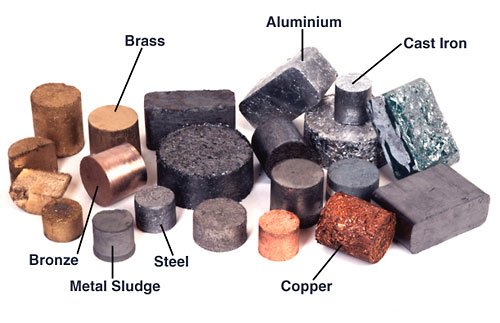Posted by Hugh Harriss on 05 22 13
The Difference Between Brass and Zinc
As you may find after looking through our online store, the majority of our hardware products are made of solid brass. You will see a lot of other buckle providers around the internet selling zinc, titanium, steel, and simply “ metal buckles". We would like to give you a break-down of what ‘brass’ is, and what makes it different from other metals.
What is brass?
Brass is an alloy of copper and zinc, commonly known for its superior strength, resilience and quality. Depending on the levels of copper and zinc used, you can develop a range of color variations. Brass can be forged, stamped, cast, wrought, or die-cut. The majority of our products are sand casted. Brass can then finished in a variety of ways such as brass, nickel plate, nickel matte, gold, antique brass, silver, polished, among countless others.
The difference between solid brass and brass plating
 Solid brass means that the piece is made purely of brass from its core to its exterior. Pure brass is always able to be polished back to its original sheen, though an old laquer may need to be removed prior to polishing. On the other hand, brass plated hardware typically has a core made of steel or zinc with a thin layer of brass electroplated to it. To protect the plate, laquer will be applied, allowing the brass to maintain its color. Plating will have a much shorter lifespan, and the thin layer of plating will deteriorate over time and need to be replaced.
Solid brass means that the piece is made purely of brass from its core to its exterior. Pure brass is always able to be polished back to its original sheen, though an old laquer may need to be removed prior to polishing. On the other hand, brass plated hardware typically has a core made of steel or zinc with a thin layer of brass electroplated to it. To protect the plate, laquer will be applied, allowing the brass to maintain its color. Plating will have a much shorter lifespan, and the thin layer of plating will deteriorate over time and need to be replaced.
How to tell the difference between solid brass and brass plating?
This can be tricky to determine at first glance if the solid brass buckles and brass plated pieces are brand new. An initial test to run is with a magnet. By holding a magnet to both pieces you will find that one of them does not have a magnetic attraction. Do you have a guess which is magnetic? The answer: solid brass is not magnetic, while a brass plated piece is. Another test that can be run is by scratching both pieces, or looking at an old handbag, purse or other product with brass hardware that has been through some wear and tear. See if the scratches reveal a shiny yellow or silver color. If you see the shiny yellow you have solid brass, and silver you have zinc, steel, or some other white metal.
Why is brass lacquered?
First of all, what is laquer? Lacquer is a clear coating that protects and preserves the underlying brass without affecting its color. It is protecting the brass from the air, which in time will cause the brass to oxidize and inevitably cause the piece to tarnish. If you want to re-polish or re-laquer a piece of brass, you should first remove the original laquer by applying paint or laquer thinner.
Brass vs Zinc hardware
So what are the key features that make brass a better choice for craft, product, handbag, and purse hardware? First is corrosion. Brass will corrode based on the level of elements that are added to the brass alloy. The alloys that we use at Buckleguy make our brass hardware exteremely resistant to corrosion. Zinc meanwhile is a highly corrosive metal (not an alloy, so its elements cannot be affected to reduce corrosion resistance). Though with proper laquering or coating, the zinc can be protected from oxidizing effects.
And perhaps the biggest reason why brass is superior to zinc is its durability. Brass is much more malleable than zinc meaning that it can be shaped more eaisily. Since brass is “stretchier” it is a lot less susceptible to cracking under pressure. So on handbags, suitcases, large bags, and other products that are meant to carry weight, brass will hold up to the challenge. And due to its greater durability, it can take on the wear and tear you put it through over several years, decades, and centuries! On the other hand, you will find zinc hardware on lesser quality products that will break after time due to its inability to hold up to the pressure and its inability to stretch. Think of it like a tree branch. A branch that is alive and well will not snap when bent, while a dead branch that has no life will.
 Home
Home